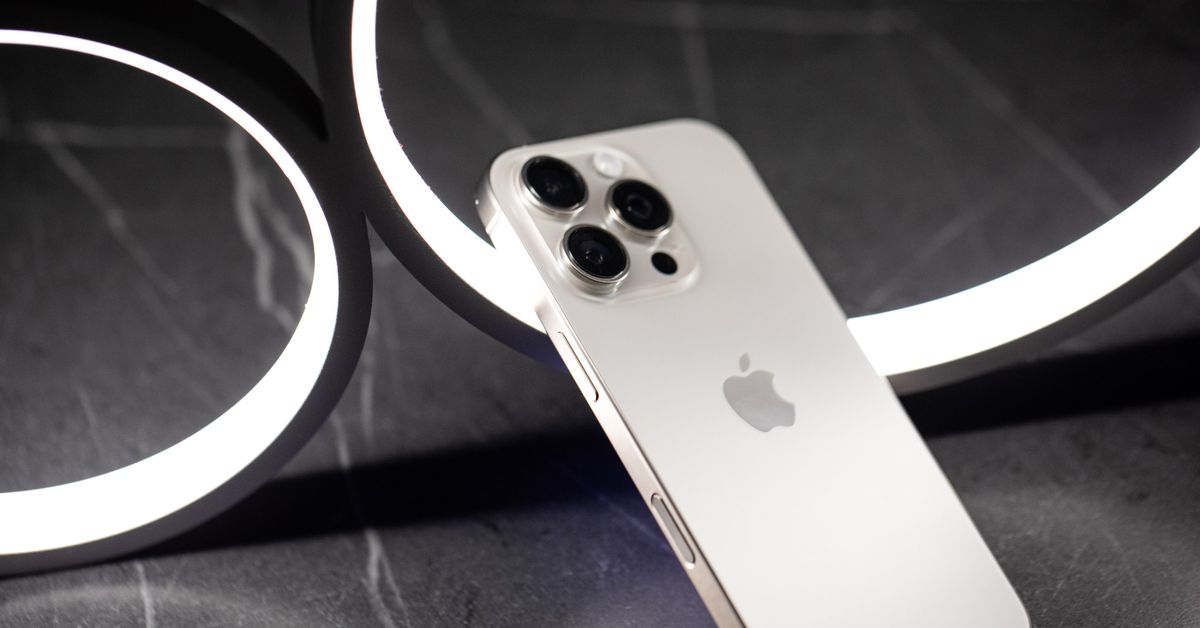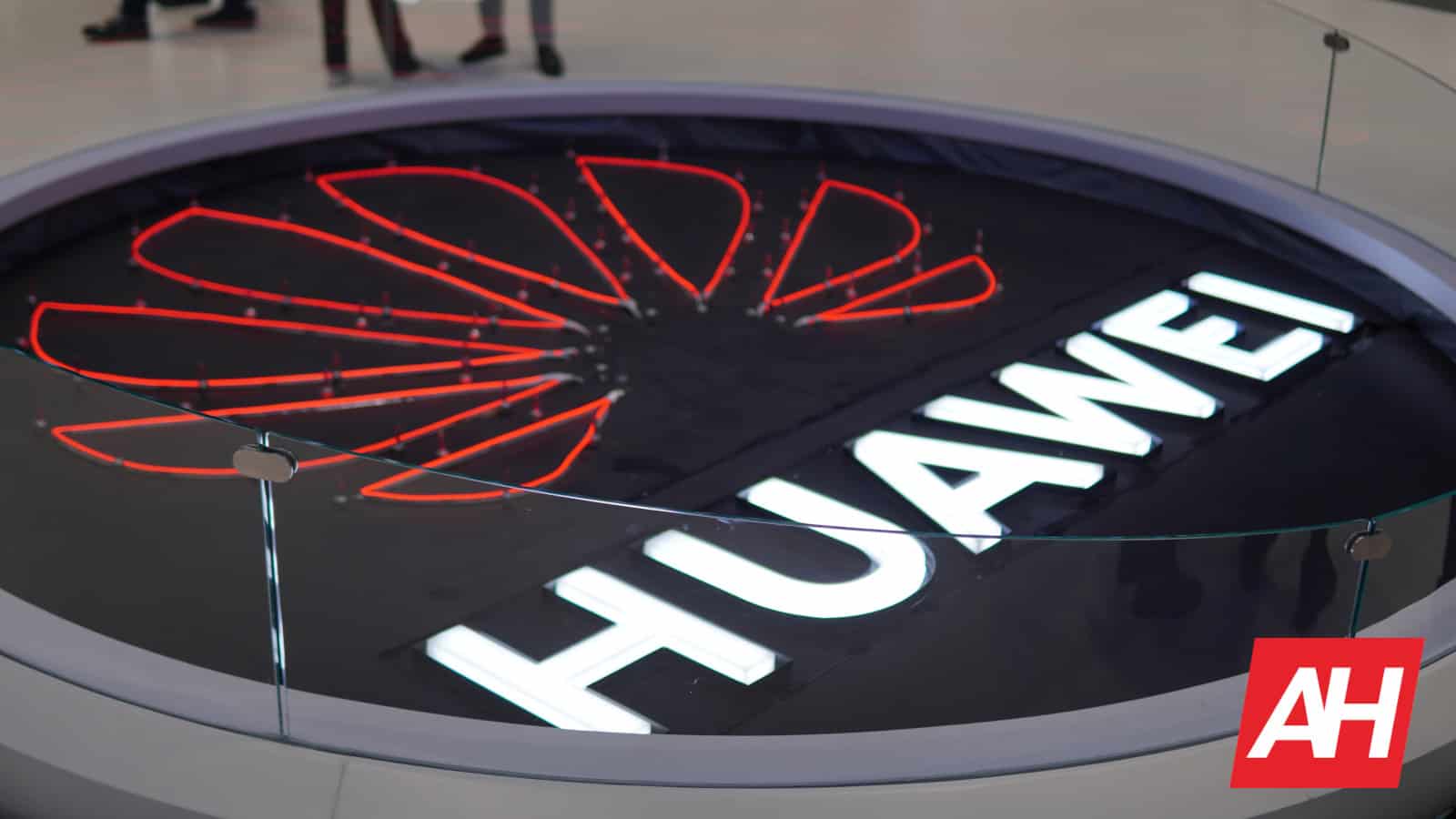Russ Crandall knows how to reinvent himself. At 24, he relearned how to walk and write after a stroke impacted his brain. When open-heart surgery wasn’t enough to address a rare autoimmune disease, he adopted a paleo diet — and became a New York Times bestselling cookbook author and food blogger following his seemingly miraculous recovery. Last year, he retired from a 22-year career as a US Navy translator to become a full-time YouTuber instead.
Technology
iPhone sales are booming — with or without Apple Intelligence

To cap off a busy week that saw the rollout of the first Apple Intelligence features and several new Macs, Apple reported its fiscal Q4 earnings this afternoon. The period included very early sales of the iPhone 16 lineup, offering a chance to gauge the momentum of the company’s latest phones. The Apple Watch Series 10 and AirPods 4 were also released during the quarter. CEO Tim Cook told CNBC that sales of the iPhone 15 were “stronger than 14 in the year-ago quarter, and 16 was stronger than 15.”
The company reported revenue of $94.9 billion, which is a new record for the September quarter and up 6 percent year over year. The strong performance was dampened somewhat by a one-time income tax charge of $10.2 billion that Apple paid to Ireland after a long-running tax dispute. Nearly every segment of Apple’s business was also up with the exception of the “wearables, home, and accessories” category. iPad revenues were up 8 percent after Apple finally introduced new iPad Pro and iPad Air models in the spring.
Apple’s first set of AI-powered Apple Intelligence capabilities are mostly focused on summarization, writing tools, and image cleanup. ChatGPT integration and the ability to generate images will come with iOS 18.2 in December. “We’re getting great feedback from customers and developers already and a really early stat, which is only three days worth of data: users are adopting iOS 18.1 at twice the rate that they adopted 17.1 in the year ago quarter,” Cook told CNBC.
The iMac, Mac Mini, and MacBook Pro were all refreshed this week with Apple’s latest M4 silicon. The Mini underwent a substantial redesign and is now smaller than ever. It’s rumored that M4 editions of the MacBook Air, Mac Pro, and Mac Studio will follow sometime next year. Apple refreshed the iPad Mini earlier this month. This batch of new hardware, along with the iPhone 16 lineup and wearables, could boost Apple’s performance in the all-important holiday quarter.
Technology
Why is Nintendo targeting this YouTuber?

Now, he’s wondering if Nintendo will force him to change yet again.
Crandall runs Retro Game Corps, a YouTube channel with half a million subscribers that shows hundreds of ways to play classic games using modern hardware and emulation. If there’s a handheld gaming device released in the past four years, odds are Crandall has made a 20-minute video about it. He started the channel as a hobby in 2020 during the covid-19 pandemic but soon realized it could become his day job.
So, last year, he shut down his food blog — “I was kind of done telling people what to eat,” he says — and left the military with the rank of master chief petty officer.
But four years into his YouTube career, on September 28th, Crandall saw how easily his new life as a content creator could disintegrate. Walking back from his studio after pulling an all-nighter, he checked his phone to see if a just-edited video was uploading properly. It was — but another one of his videos vanished before his eyes. Days earlier, he’d published a 14-minute video about how well Nintendo Wii U games can run on Android handhelds, and now it had been wiped from YouTube.
“This can’t be happening,” he recalls saying out loud. A few minutes later, a YouTube email confirmed it wasn’t a glitch: Nintendo had issued a DMCA takedown notice, YouTube had removed his video, and his entire 500,000-subscriber channel was now at risk of permanent deletion.
“We’ll have to terminate your channel” after one more strike, YouTube warned
It was his second YouTube copyright strike from Nintendo, and Crandall says that’s when it truly sank in. YouTube maintains a strict “three strikes, you’re out” rule, and he realized his family’s livelihood depended on preventing strike number three. “It all sort of came crashing down in that moment,” he tells The Verge.
In a panic, he rushed back to the studio, canceled his upload, and publicly declared that Nintendo was targeting him. He would begin self-censoring all his videos to hopefully escape the Japanese company’s wrath. “I will no longer show any Nintendo games on-screen,” he told his fans and related communities on Reddit, YouTube, and social networks.
Nintendo was well within its rights to ask for a takedown, of course: Crandall had shown the company’s copyrighted content onscreen. And yet that doesn’t explain the copyright strike at all since countless Twitch streamers, YouTubers, TikTokers, and Instagrammers show Nintendo content every single day. Clearly, Nintendo was using copyright as a pretext to get these videos taken down.
Most institutions have historically taken Nintendo’s legal threats seriously. Countless fan projects, including unofficial remakes and sequels, have been voluntarily terminated by their creators after receiving cease and desist orders from Nintendo. While the technology behind video game emulators is generally considered legal, even the lead developers of the Nintendo Switch emulators Yuzu and Ryujinx folded when Nintendo came knocking on their doors.
But unlike many of those developers, Crandall isn’t some pseudonymous person who could slink back into the internet’s shadows. Nor is he someone Nintendo can readily accuse of “facilitating piracy at a colossal scale,” like Yuzu, for distributing software tools.
Even among content creators, Crandall doesn’t seem like the kind of person Nintendo usually threatens — he’s known for advocating that people should buy Nintendo products before they use emulators and often shows off physical cartridges in his videos to drive that message home.
“If I’m playing a Switch game on my Steam Deck, the cartridge will be there or the box will be there to indicate that I have purchased the game,” he says. While he admits he hasn’t done that 100 percent of the time, he’s been careful with Nintendo Switch games in particular. In one of the videos that YouTube removed, he flips through a wallet full of 80 genuine cartridges. He also produces guides on how to create personal backups of your own genuine classic games.
That’s why the community was so surprised when Nintendo targeted him, of all YouTubers — and it’s why Crandall might possibly take the unusual step of challenging Nintendo’s takedowns.
Crandall says he’s been a Nintendo fan for nearly 40 years, ever since his family bought an NES for Christmas in 1985. The copyright strikes hit hard. “This is the first actual interaction I’ve had with Nintendo, and it’s crazy. I feature most of their games not because I’m trying to, like, stick it to them, but just sharing the love of those games,” he says.
But he does have a guess as to why Nintendo targeted him. The first copyright strike landed on his video about the MIG Dumper and the MIG Flash, a pair of devices that let you turn genuine Nintendo Switch cartridges into digital files and then carry around an entire library of those ROMs in a special microSD-equipped flash cartridge for your console. I’ve watched the video, and while Crandall does explicitly take an anti-piracy stance, it’s easy to imagine these gadgets being used by bad actors, too.
“I think the first strike was simply due to the fact that they wanted to minimize attention around the MIG Flash cartridge and dumper, and they had an opportunity,” Crandall says. That opportunity was a relatively tiny mistake: unlike, say, fellow YouTuber Taki Udon’s video on the MIG products, Retro Game Corps showed off four seconds of the title screen of Mario to prove the MIG hardware could legitimately dump and run games, potentially infringing Nintendo’s exclusive right to distribute and / or perform its audiovisual intellectual property.
Isn’t that fair use? Crandall thinks so. It seems like his uses could be brief, limited, and educational enough to satisfy the four-factor fair use test, and arguing that could genuinely get him out of YouTube purgatory. I could easily find dozens of similar examples in our journalism here at The Verge. But in order to submit what’s called a “copyright counter notification” with YouTube, which argues that he’s been inaccurately targeted and isn’t infringing on someone’s copyright, Crandall would have to open himself up to a potential Nintendo lawsuit.
“It’s a dangerous game,” says Richard Hoeg, a business attorney who hosts the Virtual Legality podcast. “You really don’t want to get into federal court over something that even if you win, will be an expensive and time-consuming burden.”
But Crandall knows this — he seems quite read up on both the DMCA and YouTube processes — and yet he’s considered at least trying his luck. Crandall says he’s conflicted; he doesn’t want to “poke the bear.” He has his family to think about. But it’s possible Nintendo could continue to come after him, he admits, even if he lies low.
While he’s already eliminated Nintendo games from his testing suite for all future videos, he says he simply doesn’t have time to go back through the hundreds of videos he’s created that already contain Mario footage and blur or delete every last scrap. And yet, the way things stand, Nintendo could pick any of those videos to immediately designate his channel for deletion.
Companies can freely pick and choose who they target with copyright infringement complaints and lawsuits, several legal experts tell me. Unlike with trademarks, they don’t need to actively or consistently defend their works in order to maintain their rights.
Crandall says that even YouTube initially thought that perhaps Nintendo made a mistake when targeting him. He’s part of the YouTube Partner Program, and his designated partner manager told him to sit tight while YouTube asked Nintendo if it might retract its own takedown requests. But Nintendo wouldn’t, and YouTube has now told him he’s on his own.
As of late October, he’s waffling. He could simply wait two more months until YouTube’s 90-day copyright strikes expire because, as soon as they do, his channel will no longer be in danger of immediate termination. Nintendo’s takedown requests already succeeded in removing those videos, and he can hope Nintendo feels it’s made enough of an example out of him to do anything more.
Or he can submit a document that shows he’s not willing to be that example, not willing to be pushed around by Nintendo — and hope it doesn’t land him in a world of legal hurt.
It’s painful for Crandall, who has been a lifelong fan of Nintendo’s work. Even after a long day of making videos about games, he likes to relax by playing through a couple of classic Mario or Donkey Kong levels, purely to admire the artistry and design. “Since the second strike I haven’t been doing that much at all, because even just seeing the box art leaves a bit of a sour taste in my mouth,” he says.
Nintendo didn’t respond to repeated requests for comment.
Technology
Amazon finally adds MFA to its enterprise email service


Eight years on from its initial launch, Amazon has introduced multi-factor authentication (MFA) to its business cloud-hosted email service, WorkMail.
Better late than never appears to be the justification behind the near-decade delay, especially for one of the most basic forms of identity verification that has been standard practice for several years now.
However there are still hurdles to enabling MFA for WorkMail, as it will not be enabled by default and system administrators will have to manually add each user to the AWS Identity Center.
MFA at last
Amazon launched WorkMail as a competitor to Microsoft Exchange, and over the past years has built a modest customer base but still struggles to compete despite many businesses migrating to Amazon provided services and continuing to use Microsoft Exchange.
In late 2023, Amazon signed a $1 billion deal with Microsoft to provide Microsoft 365 licenses to one million of Amazon’s corporate and frontline workers, including Outlook.
In a response to questioning by TheRegister, an Amazon spokesperson said MFA was available for WorkMail through other methods, stating, “It was previously possible to configure MFA via AWS Directory Service, but setup was complex for customers and it only supported AWS-managed Microsoft ADs.”
“WorkMail continues to adhere to general security updates consistent with AWS standards, such as moving TLS minimum versions to 1.2, expanding audit logging support, and providing guidance to customers [on] how to implement overarching protections against a wide range of potential compromises,” the spokesperson said.
More from TechRadar Pro
Technology
More than winter is coming: Warner Bros. is developing a Game of Thrones movie


In the half decade since Game of Thrones finished its eight-season run on HBO, the premium cable network has put together numerous spinoff projects — only two of which have come to fruition: House of the Dragon and the upcoming prequel A Knight of the Seven Kingdoms. Now, HBO’s parent company, Warner Bros. Discovery, is making plans to bring George R.R. Martin’s fantasy world to the big screen.
According to The Hollywood Reporter, Warner Bros. is “quietly developing” a Game of Thrones movie, but it will certainly be a lot less quiet now that the word is out. The story notes that the project is still very early in development, with no director or screenwriters attached. It’s also unclear if the studio has a concept in mind for the film, or if Martin will be directly involved with crafting the story.
Ironically, Game of Thrones showrunners David Benioff and Dan Weiss pitched HBO a trilogy of movies to wrap up the series. Martin was reportedly in favor of that plan as well, but HBO was adamant that its most popular intellectual property remain exclusive to the network. This was before Max was launched as a standalone streamer, and new ownership took over. So there doesn’t seem to be a roadblock in the way of getting the film made now.
Thus far, almost all of the proposed Game of Thrones spinoffs have been prequels. While Martin’s backstory for his A Song of Ice and Fire novels has a lot territory to explore, there was a single Game of Thrones sequel series that would have featured Kit Harington reprising his role as Jon Snow. That project fell through, but a sequel story would be the only way to bring Harington and other cast members from the show back for a new story. For now, we’ll just have to wait and see what develops.
Science & Environment
Exxon (XOM) earnings Q3 2024

An Exxon gas station is seen in the Brooklyn borough of New York City on Oct. 6, 2023.
Michael M. Santiago | Getty Images
Exxon Mobil beat third-quarter earnings expectations, as the oil major reached its highest production level in more than four decades.
Here is what Exxon reported for the third quarter compared with what Wall Street was expecting, based on a survey of analysts by LSEG:
- Earnings per share: $1.92 adjusted, vs. $1.88 per share expected.
- Revenues: $90 billion, vs. $93.94 billion expected
The oil major booked net income of $8.61 billion in the quarter, or $1.92 per share, down about 5% compared to $9.1 billion, or $2.25 per share, in the year-ago period. Exxon’s profits have declined as refining margins and natural gas prices have pulled back from from historically high levels in 2023.
The company returned $9.8 billion to shareholders in the quarter and increased its fourth-quarter dividend to $0.99 per share.
Exxon said it has reached its high production level in more than 40 years at 3.2 million barrels per day.
The oil major’s stock rose about 1% in pre-market trading.
This is a developing story. Please check back for updates.
Technology
The US forced Huawei to build its own technology, founder says

Ren Zhengfei, the founder of Huawei Technologies, said that the US forced Huawei to build its own technology. In other words, the US ban did that, as the company did not really have many options following a series of those bans.
Huawei founder believes the US forced Huawei to build its own technology
The company’s founder attended the ICPC (International Collegiate Programming Content) coding competition for university students, where he said that. He also talked with students about Huawei, technology in general, future goals, and a number of other topics.
At one point during the event, Zhengfei actually said that he believes Huawei can learn from the receptive culture of the US. He believes that it can make both Huawei and China advance in science and technology.
These were his exact words: “The US has set an example for all countries and companies worldwide on being open. If a country is closed off, it will fall behind”.
As many of you know at this point, the US sanctions landed in 2019, as security concerns were quoted. A number of additional roadblocks were set after that, though. Huawei is still blocked off from accessing tools to make chips and various other equipment.
Those bans forced Huawei to be self-sufficient
Huawei was forced to be self-sufficient, and it seemingly benefited the company in a way. Zhengfei said the following: “American technologies and tools are very good… [but] Huawei cannot use them; we had no choice but to create our tools. Open innovation and utilizing the advanced achievements of others is the true way forward for an enterprise”.
On top of everything, Huawei’s founder also highlighted the importance of AI. He said that artificial intelligence is becoming unstoppable. He said that if Huawei uses it in the right way, it could achieve a lot of success moving forward.
Huawei is expected to announce its 5nm processor made in collaboration with SMIC soon. That Kirin chip will be first used in the upcoming Huawei Mate 70 series.
Science & Environment
Cloud-inspired material can bend light around corners


A new material can bend light
University of Glasgow
Scientists have discovered a technique whereby light can be bent around corners, inspired by the way clouds scatter sunlight. This type of light-bending could lead to advances in medical imaging, electronics cooling and even nuclear reactor design.
Daniele Faccio at the University of Glasgow, UK, and his colleagues say they are shocked this type of light scattering wasn’t noticed before. It works on the same basis as clouds, snow and other white materials that absorb light: once photons hit the surface of such a material, they are scattered in all directions, barely penetrating at all and getting reflected out the way they came. For instance, when sunlight hits a tall cumulonimbus cloud, it bounces off the top, making this part of the cloud appear bright white. But so little light reaches the bottom of the cloud that this part appears grey – despite being made up of the same water droplets.
“The light bounces around and sort of tries to get in, and it’s bouncing off all the molecules and the defects,” says Faccio. “And eventually what happens is it just gets reflected back because it can’t get in. This is this scattering.”
To replicate this process, the team 3D printed objects from opaque white material while leaving thin tunnels of clear resin within. When light is shone at the material, it travels into these tunnels and is scattered – just as light is on snow or clouds. However, instead of scattering randomly in every direction until they are evenly dispersed, the photons are directed to return to the resin tunnel by the opaque material. The team put this to use, creating a range of objects that steer light in an organised way.

3D-printed white blocks with curved channels guide scattering light
University of Glasgow
These 3D-printed objects are functionally similar to fibre optic cables, which route light along their length, but they operate on fundamentally different principles. Fibre optic cables steer light by infinitely reflecting internally. When photons attempt to leave a cable’s inner core of plastic or glass, they hit another material with a lower refractive index and are reflected back inside. In this way, light can be carried for kilometres at a time, even around bends.
The researchers say their material boosts light transmission by more than two orders of magnitude compared with solid blocks without the same clear tunnels, and also allows it to be directed around curves. This is much less efficient than fibre optic, and will therefore struggle to achieve the great distances that it does, but it is also very simple and cheap.
This method of light-bending could make use of existing tunnels of translucent material, such as tendons and fluid in the spinal column, to provide new ways to carry out medical imaging. Faccio says the exact same principle also works to direct heat and neutrons, and could therefore also find use in a range of engineering applications such as cooling systems and nuclear reactors.
“It wasn’t obvious that this would work at all. We were shocked,” says Faccio, who believes the phenomenon could easily have been discovered decades or even centuries ago. “It’s not like we’ve created or found some really niche, weird equation with some weird properties.”
Topics:
-

 Science & Environment1 month ago
Science & Environment1 month agoHow to unsnarl a tangle of threads, according to physics
-

 Technology1 month ago
Technology1 month agoIs sharing your smartphone PIN part of a healthy relationship?
-

 Science & Environment1 month ago
Science & Environment1 month agoHyperelastic gel is one of the stretchiest materials known to science
-

 Science & Environment1 month ago
Science & Environment1 month ago‘Running of the bulls’ festival crowds move like charged particles
-

 Technology1 month ago
Technology1 month agoWould-be reality TV contestants ‘not looking real’
-

 Science & Environment1 month ago
Science & Environment1 month agoMaxwell’s demon charges quantum batteries inside of a quantum computer
-

 Science & Environment1 month ago
Science & Environment1 month agoX-rays reveal half-billion-year-old insect ancestor
-

 Science & Environment1 month ago
Science & Environment1 month agoSunlight-trapping device can generate temperatures over 1000°C
-

 Sport4 weeks ago
Sport4 weeks agoBoxing: World champion Nick Ball set for Liverpool homecoming against Ronny Rios
-

 Technology4 weeks ago
Technology4 weeks agoGmail gets redesigned summary cards with more data & features
-

 Football4 weeks ago
Football4 weeks agoRangers & Celtic ready for first SWPL derby showdown
-

 Technology1 month ago
Technology1 month agoRussia is building ground-based kamikaze robots out of old hoverboards
-

 Science & Environment1 month ago
Science & Environment1 month agoPhysicists have worked out how to melt any material
-

 Science & Environment1 month ago
Science & Environment1 month agoLaser helps turn an electron into a coil of mass and charge
-

 Technology1 month ago
Technology1 month agoUkraine is using AI to manage the removal of Russian landmines
-

 Technology4 weeks ago
Technology4 weeks agoSamsung Passkeys will work with Samsung’s smart home devices
-

 Science & Environment1 month ago
Science & Environment1 month agoQuantum ‘supersolid’ matter stirred using magnets
-

 Science & Environment1 month ago
Science & Environment1 month agoLiquid crystals could improve quantum communication devices
-

 Sport4 weeks ago
Sport4 weeks agoAaron Ramsdale: Southampton goalkeeper left Arsenal for more game time
-

 MMA4 weeks ago
MMA4 weeks agoDana White’s Contender Series 74 recap, analysis, winner grades
-

 TV4 weeks ago
TV4 weeks agoসারাদেশে দিনব্যাপী বৃষ্টির পূর্বাভাস; সমুদ্রবন্দরে ৩ নম্বর সংকেত | Weather Today | Jamuna TV
-

 News4 weeks ago
News4 weeks agoWoman who died of cancer ‘was misdiagnosed on phone call with GP’
-

 News4 weeks ago
News4 weeks ago‘Blacks for Trump’ and Pennsylvania progressives play for undecided voters
-

 MMA4 weeks ago
MMA4 weeks ago‘Uncrowned queen’ Kayla Harrison tastes blood, wants UFC title run
-

 Science & Environment1 month ago
Science & Environment1 month agoA new kind of experiment at the Large Hadron Collider could unravel quantum reality
-

 Technology1 month ago
Technology1 month agoWhy Machines Learn: A clever primer makes sense of what makes AI possible
-

 Technology1 month ago
Technology1 month agoEpic Games CEO Tim Sweeney renews blast at ‘gatekeeper’ platform owners
-

 Money4 weeks ago
Money4 weeks agoWetherspoons issues update on closures – see the full list of five still at risk and 26 gone for good
-

 News4 weeks ago
News4 weeks agoNavigating the News Void: Opportunities for Revitalization
-

 News4 weeks ago
News4 weeks agoMassive blasts in Beirut after renewed Israeli air strikes
-

 News1 month ago
News1 month agoRwanda restricts funeral sizes following outbreak
-

 Technology4 weeks ago
Technology4 weeks agoMicrosoft just dropped Drasi, and it could change how we handle big data
-

 Science & Environment1 month ago
Science & Environment1 month agoWhy this is a golden age for life to thrive across the universe
-

 MMA4 weeks ago
MMA4 weeks agoPereira vs. Rountree prediction: Champ chases legend status
-

 Technology4 weeks ago
Technology4 weeks agoCheck, Remote, and Gusto discuss the future of work at Disrupt 2024
-

 Business4 weeks ago
Business4 weeks agoWhen to tip and when not to tip
-

 News4 weeks ago
News4 weeks ago▶ Hamas Spent $1B on Tunnels Instead of Investing in a Future for Gaza’s People
-

 Football4 weeks ago
Football4 weeks agoWhy does Prince William support Aston Villa?
-

 MMA4 weeks ago
MMA4 weeks ago‘Dirt decision’: Conor McGregor, pros react to Jose Aldo’s razor-thin loss at UFC 307
-

 Technology1 month ago
Technology1 month agoMicrophone made of atom-thick graphene could be used in smartphones
-

 Technology4 weeks ago
Technology4 weeks agoMusk faces SEC questions over X takeover
-

 Sport4 weeks ago
Sport4 weeks agoChina Open: Carlos Alcaraz recovers to beat Jannik Sinner in dramatic final
-

 Science & Environment1 month ago
Science & Environment1 month agoQuantum forces used to automatically assemble tiny device
-

 Science & Environment1 month ago
Science & Environment1 month agoITER: Is the world’s biggest fusion experiment dead after new delay to 2035?
-

 Science & Environment1 month ago
Science & Environment1 month agoA slight curve helps rocks make the biggest splash
-

 Womens Workouts1 month ago
Womens Workouts1 month ago3 Day Full Body Women’s Dumbbell Only Workout
-
Business1 month ago
how UniCredit built its Commerzbank stake
-

 News4 weeks ago
News4 weeks agoCornell is about to deport a student over Palestine activism
-

 Sport4 weeks ago
Sport4 weeks ago2024 ICC Women’s T20 World Cup: Pakistan beat Sri Lanka
-

 Sport4 weeks ago
Sport4 weeks agoWales fall to second loss of WXV against Italy
-
Business4 weeks ago
DoJ accuses Donald Trump of ‘private criminal effort’ to overturn 2020 election
-

 Business4 weeks ago
Business4 weeks agoWater companies ‘failing to address customers’ concerns’
-

 MMA4 weeks ago
MMA4 weeks agoKayla Harrison gets involved in nasty war of words with Julianna Pena and Ketlen Vieira
-

 MMA4 weeks ago
MMA4 weeks ago‘I was fighting on automatic pilot’ at UFC 306
-

 Science & Environment1 month ago
Science & Environment1 month agoNuclear fusion experiment overcomes two key operating hurdles
-

 News2 months ago
News2 months ago▶️ Hamas in the West Bank: Rising Support and Deadly Attacks You Might Not Know About
-

 Technology1 month ago
Technology1 month agoMeta has a major opportunity to win the AI hardware race
-
Business1 month ago
Bank of England warns of ‘future stress’ from hedge fund bets against US Treasuries
-

 News4 weeks ago
News4 weeks agoGerman Car Company Declares Bankruptcy – 200 Employees Lose Their Jobs
-

 News4 weeks ago
News4 weeks agoHull KR 10-8 Warrington Wolves – Robins reach first Super League Grand Final
-

 MMA4 weeks ago
MMA4 weeks agoKetlen Vieira vs. Kayla Harrison pick, start time, odds: UFC 307
-

 Sport4 weeks ago
Sport4 weeks agoCoco Gauff stages superb comeback to reach China Open final
-

 Sport4 weeks ago
Sport4 weeks agoMan City ask for Premier League season to be DELAYED as Pep Guardiola escalates fixture pile-up row
-

 Football4 weeks ago
Football4 weeks ago'Rangers outclassed and outplayed as Hearts stop rot'
-

 Sport4 weeks ago
Sport4 weeks agoWXV1: Canada 21-8 Ireland – Hosts make it two wins from two
-
Business4 weeks ago
Sterling slides after Bailey says BoE could be ‘a bit more aggressive’ on rates
-

 Technology4 weeks ago
Technology4 weeks agoTexas is suing TikTok for allegedly violating its new child privacy law
-

 Sport1 month ago
Sport1 month agoSturm Graz: How Austrians ended Red Bull’s title dominance
-
Business4 weeks ago
The search for Japan’s ‘lost’ art
-

 Sport4 weeks ago
Sport4 weeks agoPremiership Women’s Rugby: Exeter Chiefs boss unhappy with WXV clash
-

 Technology4 weeks ago
Technology4 weeks agoLG C4 OLED smart TVs hit record-low prices ahead of Prime Day
-

 Technology4 weeks ago
Technology4 weeks agoIf you’ve ever considered smart glasses, this Amazon deal is for you
-

 Science & Environment1 month ago
Science & Environment1 month agoTime travel sci-fi novel is a rip-roaringly good thought experiment
-

 Science & Environment1 month ago
Science & Environment1 month agoNerve fibres in the brain could generate quantum entanglement
-

 Technology1 month ago
Technology1 month agoUniversity examiners fail to spot ChatGPT answers in real-world test
-

 Business1 month ago
Business1 month agoStocks Tumble in Japan After Party’s Election of New Prime Minister
-

 News4 weeks ago
News4 weeks agoFamily plans to honor hurricane victim using logs from fallen tree that killed him
-

 Technology4 weeks ago
Technology4 weeks agoThe best shows on Max (formerly HBO Max) right now
-

 Entertainment4 weeks ago
Entertainment4 weeks agoNew documentary explores actor Christopher Reeve’s life and legacy
-
Business4 weeks ago
Top shale boss says US ‘unusually vulnerable’ to Middle East oil shock
-

 Technology4 weeks ago
Technology4 weeks agoSingleStore’s BryteFlow acquisition targets data integration
-

 Technology4 weeks ago
Technology4 weeks agoOpenAI secured more billions, but there’s still capital left for other startups
-

 Money4 weeks ago
Money4 weeks agoPub selling Britain’s ‘CHEAPEST’ pints for just £2.60 – but you’ll have to follow super-strict rules to get in
-

 Sport4 weeks ago
Sport4 weeks agoNew Zealand v England in WXV: Black Ferns not ‘invincible’ before game
-

 Entertainment4 weeks ago
Entertainment4 weeks agoBruce Springsteen endorses Harris, calls Trump “most dangerous candidate for president in my lifetime”
-

 Money3 weeks ago
Money3 weeks agoTiny clue on edge of £1 coin that makes it worth 2500 times its face value – do you have one lurking in your change?
-

 News1 month ago
News1 month ago▶️ Media Bias: How They Spin Attack on Hezbollah and Ignore the Reality
-

 Science & Environment1 month ago
Science & Environment1 month agoHow to wrap your mind around the real multiverse
-

 Business1 month ago
Business1 month agoChancellor Rachel Reeves says she needs to raise £20bn. How might she do it?
-

 MMA4 weeks ago
MMA4 weeks agoJulianna Peña trashes Raquel Pennington’s behavior as champ
-

 Technology4 weeks ago
Technology4 weeks agoThis AI video generator can melt, crush, blow up, or turn anything into cake
-

 Technology4 weeks ago
Technology4 weeks agoJ.B. Hunt and UP.Labs launch venture lab to build logistics startups
-

 Technology4 weeks ago
Technology4 weeks agoAmazon’s Ring just doubled the price of its alarm monitoring service for grandfathered customers
-
Politics4 weeks ago
Rosie Duffield’s savage departure raises difficult questions for Keir Starmer. He’d be foolish to ignore them | Gaby Hinsliff
-

 Technology4 weeks ago
Technology4 weeks agoThe best budget robot vacuums for 2024
-

 Technology4 weeks ago
Technology4 weeks agoBest iPad deals for October 2024
-

 TV4 weeks ago
TV4 weeks agoTV Patrol Express September 26, 2024
-

 Technology4 weeks ago
Technology4 weeks agoApple iPhone 16 Plus vs Samsung Galaxy S24+
-

 MMA4 weeks ago
MMA4 weeks agoPennington vs. Peña pick: Can ex-champ recapture title?
-
Business4 weeks ago
Head of UK Competition Appeal Tribunal to step down after rebuke for serious misconduct

You must be logged in to post a comment Login